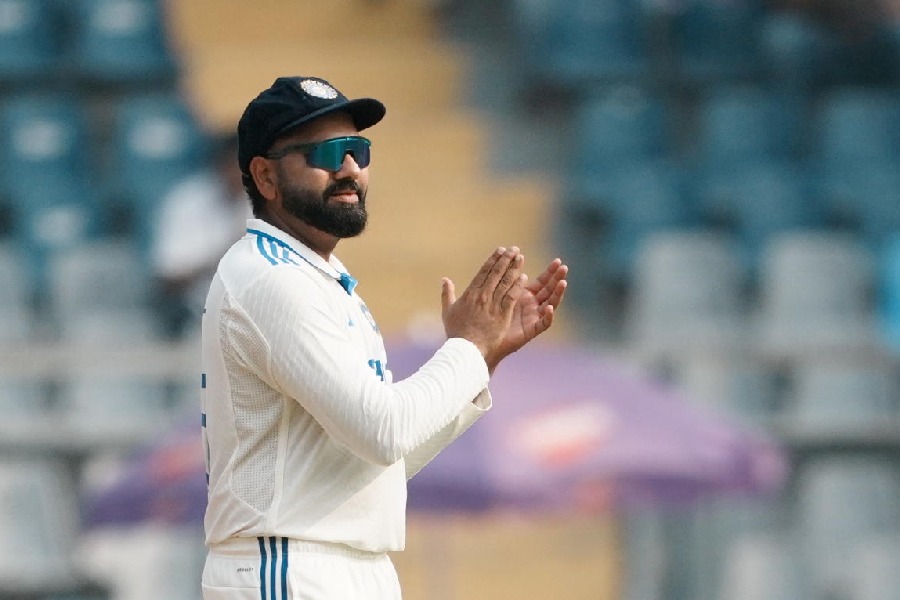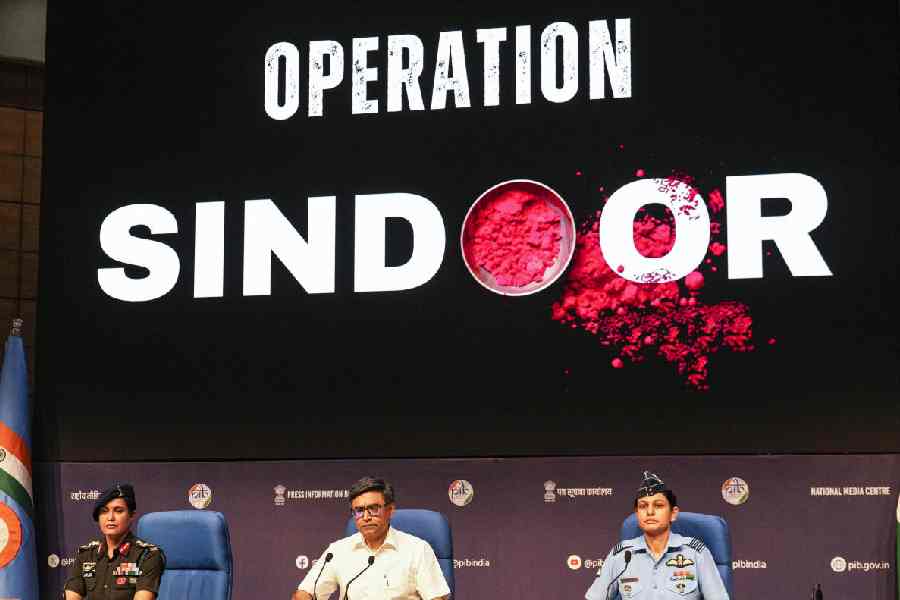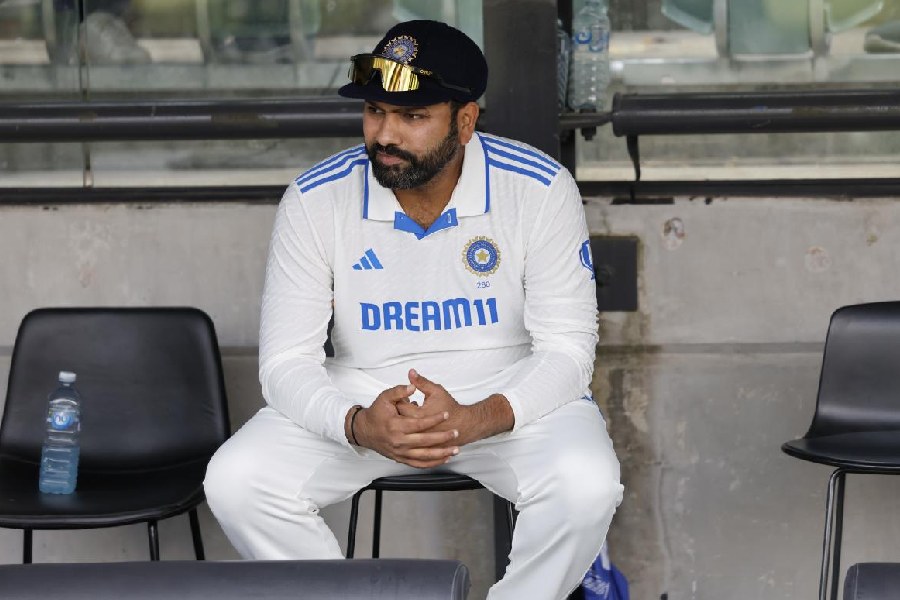
KALIDASA - RAGHUVAMSAM: THE LINE OF RAGHU Translated by A.N.D. Haskar, Penguin, Rs 499
In order to understand and appreciate the genuine creative worth and distinction of Kalidasa's most ambitious venture, Raghuvamsam, one needs to read it in conjunction with two other epics, the Ramayan and the Mahabharat. R.L. Chambers, in his classic work on epics and ethics, placed the two epics, the Ramayan and the Mahabharat, in the category of 'oral' epics, which are based on straight-cut poetic narratives shunning autonomous literary excellence. It is precisely at this point that Kalidasa scores along with Virgil, the writer of the Aeneid. They have written not 'oral' but 'literary' epics, marked by creative excellence, that include literary flourishes, memorable similes and metaphors.
For example, neither Vyasa nor Balmiki preceded Kalidasa in the latter's coining of scintillating upamas. One out of many of such creative comparisons is read in page 15 of Raghuvamsam, where Dilip expresses his yearning to have a son who could continue the familial line: "Lord, know this is my final debt,/ without release from which my pain/ is as unbearable as an elephant's/ chafing, fettered with a chain." Yet another elephant-simile is found in page 91, where King Aja is being introduced: "With these words sung by the bards,/ the prince awoke and quit his bed,/ like Supratita, the celestial elephant,/when by royal swans awakened,/ leaves the sand banks of the Ganga."
Kalidasa, however, has followed the epics, the Mahabharat in particular, while describing the battle-scenes. In page 52, we encounter the battle between Raghu and Indra, the king of gods. Kalidasa writes: "Then commenced between the two,/ one looking upwards, one below,/ a clash tumultuous;.../ Raghu severed Indra's bowstring/ with a sound like oceans being churned."
Depictions such as these remind us of the Kurukshetra War, especially the missile-duel between Bhisma and Arjuna; then again between Karna and Arjuna. At one specific point, the emotional correlative in the Ramayan, for a moment, excels the narrative of lamentation of Aja (as read in Kalidasa), when he loses his heart's beloved, Indumati. While Kalidasa has doubtlessly written a moving account of Aja's sorrow, he did not use the crucial words, "Ishwari, Ishwari tumi amar Ishwari" (faithful translation done by Krittibas). Indeed, only these words quoted create a deep ambience of melancholy that has affected King Aja. Kalidasa needed more space and more words to create a similar ambience.
Yet another striking similarity occurs in the swayambara passages. There is much in common between Draupadi's swayambara in the Mahabharat and that of Indumati's in Raghuvamsam. In fact, what brings the two together is their calculated rejection of other suitor-kings, who, after being rejected, try to create a chaos by forcing Aja and Arjuna into a battle, which both Aja and Arjuna won convincingly. Both Aja and Arjuna warded off the jealous, unlucky monarchs with the help of their arrows and missiles. Kalidasa's measured and lyrical verse, as read in page 96 - "Then, in a litter four men carried,/and by her family surrounded,/ on the rostrum's path arrivedhe girl adorned in wedding dress/who was to choose a husband" - instantly recalls Draupadi's entrance in the swayambara sabha, bashful though determined, led by her brother Dhristadumna.
All these three epics create in their own sovereign ways the life, manner and customs of ancient Bharata. With these texts in front of us, we enter another age where gods come down to the earth to fight or support mortal beings. At that point of time, the heaven and the earth are drawn in a breath-close relationship. As observed by the author-translator himself, " Raghuvamsam will continue to enthrall readers with its insights into ancient India, its land, people and seasons, and its social and cultural values that are still relevant today". The relevance could hardly be more appropriate and pressing in an age and country where swayambara has been replaced by dahej.
The storyline of Raghuvamsam is essentially simple like that of other epics. In 19 full-fledged cantos, the line or dynasty of Raghu is narrativized from its founder Dilip to the accession of Agnivarna who was dissolute and sex-obsessed. Fortunately though, the official queen or Agnivarna's wife was pregnant when her wastrel husband died. She took over the reins of administration - a step which was approved by the ministers. This is the concluding part of the epic which has been described by Kalidasa in the following words, read right at the end of page 339: "With that root within her, like/ seeds sown in earth during the rains/ and the people waiting for a harvest,/ she sat upon the golden throne,/ ruling with minister veterans..."
The founder of the dynasty, Dilip, was followed by the great monarch, Raghu. Aja came after Raghu. He was followed by Dasaratha who left Rama to be the next king. Thereafter Kusha, son of Rama, ascended the throne and he was followed by a string of monarchs beginning from Athiti to Nabha, Pundarika, Unnabha, Vajransabha, Brahmistha to Sudarshana. All these monarchs kept the flag of the hallowed dynasty flying. The tragic break came when Sudarshana's son, Agnivarna, ascended the throne. Given indelibly to carnal pleasures, he forsook the glory and triumph of the dynasty to spend loose, erotic days and nights with courtesans. He fell ill and died a painful death. The 19 cantos picturing the rise and crisis of Raghu's dynasty are mesmerizing in quality and one feels like reading some of the passages again and yet again to experience the sheer lyricism of the verse.
I - it is my personal choice - will read and reread the following: "Dilip and the Lion" in canto 2, "Raghu fights Indra" in canto 3, "The Awakening of Aja at Vidarbha" in canto 5, "Aja and Indumati" in canto 7, "The Death of Indumati" in the same canto, "An Unintended Kill" in canto 9, "The Bow of Shiva" in canto 11, "The Final Duel" (between Rama and Ravana) in canto 12, "Rama and Sita over the Sea" in canto 13, "Refuge with Balmiki" in canto 14, "Ayodhya after Rama" in canto 16, and "Agnivarna's Seasonal Sport" in canto 19. What is significant to note in this context is that Kalidasa poeticized all the navarasas in this epic by following Bharata's Natyashastra. This means that the entire gamut of emotions from joy emanating from a martial victory to profound sorrow expressed at the death of the beloved have found their predestined places in the epic. In other words, not only the dramatist Kalidasa but also Kalidasa, the poet and creator of the epic, paid due reverence to the guru, Bharatmuni.
I still wonder why some readers even after reading Raghuvamsam, comment that Kalidasa's classic erotic verse is to be read in either Abhijnana Shakuntala or Kumarasambhava. The real and sustained erotic passages are to be read in the epic under consideration. On the one hand, it describes the positive and constructive eros that qualified the relationship of Aja and Indumati and, on the other, irresponsible and negative eros is the theme in canto 19, in which Agnivarna exhales sex only. This degenerating sex is qualitatively different from the eros depicted by poets such as Amaru and Bhartihari and from Kalidasa's own preoccupation with the theme to be read in other passages. Degeneration nevertheless has its own lyrical worth as is evident in the lines that follow in page 337: "His girlfriends on him danced attendance/ thereafter in summer garb;/ their bosoms touched with sandal paste/ their elegant bracelets strong with pearls." It was a great pleasure to read this colloquial, racy and elegant translation which has done full justice to the lyrical original.











